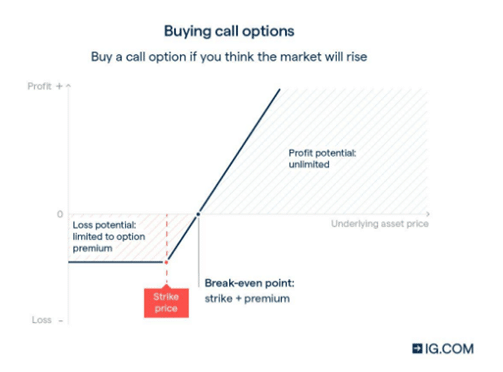

As with forex trading, trading options is a high-risk activity. It also has its glossary of terms, which must be understood if one is to be successful. At its basic level, an option is the right to buy or sell an underlying asset at a specified price, but not all options are the same. A European option can only be exercised upon its expiration date. However, an American option gives its holder the added benefit of being able to exercise it at any time before or even upon its actual expiration date.
The American version often referred to as an American style option, may provide its holder with more financial flexibility, but it does come at a price. The seller will capture a premium on the purchase date, but due to the unique nature of this option, its valuation is necessarily more complicated. Pricing of a European option falls under the economic theory defined by the Black-Scholes pricing model, but an upward adjustment applies when pricing an American option.
In the following article, you will learn more details related to American options, including how they work, valuation issues, exercise considerations, pros and cons, and, lastly, an example that walks through the numbers of a trade related to an American option.
Background/Context of american options
An option, by definition, is a derivative in that it derives its value independently from another source. This financial instrument was primarily developed to allow investors to hedge the risk inherent in their asset portfolios. However, using standardised option contracts, including both Puts and Calls, enabled investors and speculators to buy and sell these items on regulated exchanges easily. The CME Group is the largest derivatives and options exchange in the world.
When options are explained, they are often compared to insurance policies in that a premium is paid upfront for specific coverage over a given period. In the case of an option, if the market moves in the investor’s favour, the option may be exercised or sold, and the underlying asset is either bought or sold for a profit. Alternatively, if the market moves against the investor, then the loss on the option is fixed and equates to the original price paid for the option, its premium.
Standardised contracts must conform to various rules regarding terms like strike price (the actual price that can be exercised by the Put or Call), expiration date, and the amount of the underlying security, which must be traded on a national exchange. Custom or non-standard options can be written for special situations, but their liquidity is reduced to the buyers and sellers at hand.
A Call or Put Option gives its holder the right, but not the obligation, to buy or sell its underlying asset at its specified strike price. Rights also vary regarding the expiration date, depending on the option issued. A European option can only be exercised upon its expiration date, while an American option can be exercised at any time leading up to and including its expiration date. There is even a Bahamian option that has staggered expiration dates.
By its very nature, the American option provides greater flexibility for its holder and more undefined risk for its seller. The cost of an American option is, therefore, greater than that for European options, which are limited in their use, but added flexibility equates to increased upfront costs. American style options are prevalent in equity markets, including those for Exchange-Traded Funds, but equity indices like the S&P 500 rely upon European options.
Investors can always unwind their option positions, including those for European options, before the applicable expiration dates by selling the instrument on the exchange, subject to liquidity constraints and additional costs. Valuation considerations begin with a European style option using what is known as the Black-Scholes model. The exercise variability of the American option requires an additional adjustment to this figure. This extra cost is meant to cover the added risk and uncertainty of an early exercise taken on by the option writer.
Related Articles
Valuation Issues
Determining an appropriate premium cost for a specific option, whether it might pertain to a stock, a currency pair, or a commodity necessarily involves several variables related to the time cost of money, market probabilities, volatility, the strike price, and, lastly, the option’s expiration date. As complicated as this pricing process appears, several models have been developed over the years to mimic reality and deliver a reliable method for establishing an equitable pricing infrastructure. The most favoured model is the Black-Scholes pricing model.
Since there is no explicit numerical formula for calculating the price of an option, the Black-Scholes equation has gained wide acceptance by option market participants. It begins with pricing a European Option, but average future volatility is not an observable quantity. An assumption can be made from prevailing option prices in the market and adjustments made to accommodate American option pricing. No consensus, however, exists on how this is done.
An investor need not learn partial differential equations when dealing with options to value an option position in the market. An option payoff diagram can be constructed to show the average investor when an option position is “in-the-money”, i.e., when a potential paper gain is available. Here is one example of a chart for having bought a Call option:

Diagram courtesy of IG.com
Profit or Loss figures are posted on the left axis, while the value of the underlying asset is plotted from the “O” point on the left axis to the right. The premium cost is shown in the shaded portion to the left of the Strike Price and below “0”. The Break-even point is the sum of the premium and the Strike Price. If the market moves in your favour above this Break-even value, then your profit is unlimited, as depicted by the shaded portion of the chart in the upper-right quadrant. In this region, your option is said to be “in the money”.
Conversely, if the underlying asset value is to the left of the Break-even point, then your option is “out-of-the-money”, but your loss potential is limited to the cost of your Call option. Similar charts can be prepared for Put options, but the lines flow from right to left with your profit potential depicted in the upper-left quadrant.
Exercise Considerations
Do all holders of an America call option or put option exercise early? The answer is not necessarily so since, in some cases, it may be more cost-beneficial to hold onto the option until the expiration date. With stock options, there is an issue with dividends. An early exercise could negate the receipt of this additional revenue.
If the call option is deep in the money, its premium in the market may have also increased considerably. It may be better to sell the option in the open market and pocket the net gain in premium, along with the gain on the option itself. In the case of a currency pair option, consideration must be given to the time value of money and the interest rate differential between the strike currency and the currency to be received. An early exercise is warranted when the other currency might depreciate more than the time value of money to be forfeited.
Pros and Cons of American Options
Options inherently require less capital to achieve dramatic returns when prices move favourably for the underlying asset. American options, however, do offer more flexibility, but there can be drawbacks, as well. Here is a brief recap:
Pros:
- Holder may exercise at their discretion
- Exercise can happen before an ex-dividend date
- Permits holder to record paper gains and reinvest
Cons:
- Premium over the pricing for a European option
- Precluded from trading in index options restricted to European style options only
- If exercised too early, then potential appreciation afterwards may be missed
Example
Continuing with the Call option example noted in the “Valuation Issues” above, you might consider selling the option outright or exercising if you are deep in the money. To exercise, it means that you would be required to buy 100 shares for each contract. Let’s assume that a suitable sales price could not be achieved and that you had paid $5 for a six-month option for “ABC” company at a Strike Price of $100.
First, your option cost would have been $500 for one Call option contract of 100 shares. Assume the price rose to $160. You exercise your option and buy 100 shares of ABC for $10,000. You then sell the shares for $16,000. Your profit = $16,000 – $10,000 – $500 = $5,500. There may also be commissions to factor in and a delay in receiving the shares for two days before you could sell them. The gain would be significant, and you did not have to wait until expiration.
Conclusion
American style options offer a holder significant benefits related to flexibility and timing. While these options may cost a bit more, the ability to cash in a paper profit well ahead of a distant expiration date is well worth the small additional cost.
Forextraders' Broker of the Month
BlackBull Markets is a reliable and well-respected trading platform that provides its customers with high-quality access to a wide range of asset groups. The broker is headquartered in New Zealand which explains why it has flown under the radar for a few years but it is a great broker that is now building a global following. The BlackBull Markets site is intuitive and easy to use, making it an ideal choice for beginners.
